Ask Ethan: How can we see all the way back to the Big Bang?
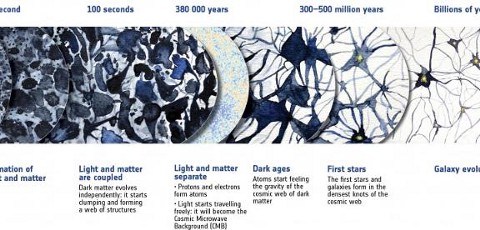
If we can’t even witness the birth of our Solar System and planet, how can we claim to see the birth of the Universe?
“There have to be moments when you glimpse something decent, something life-affirming even in the most twisted character. That’s where the real art lies.” –Martin McDonagh
Once time moves forward, you can never go back to the past again. From a human perspective, we call this the arrow of time: the past is just a memory, the future has not yet come to be, and the present is all we can ever experience. Presumably, everything in the Universe obeys that same property, as interactions either occurred in the past, are occurring now, or will occur in the future. But shouldn’t that render the past, as it is for humans, only a memory for the Universe? Bruce Fulford is troubled by the consideration that this might not be the case:
How do we see CMB photons today when the Earth didn’t exist at the time the photons were emitted? Shouldn’t those photons have [sped] away from us into our future?
And this is a difficult idea to process: we claim to see back billions of years in the Universe’s history, yet how do we do that when the Earth didn’t even exist at that time?
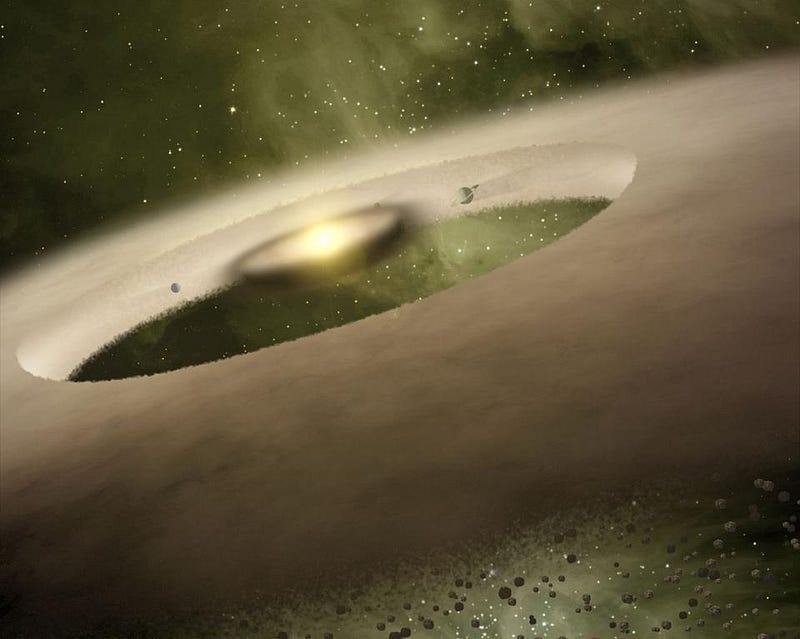
Discovering the history of our Solar System is a lot like a detective story: we have only the evidence of what remains and survives today, and we have to reconstruct the rest of the story of how we got here. Human records only go back a few thousand years at most; beyond that, we have only the clues left by our biological, chemical, geological and physical histories. We can reconstruct the history of life on Earth by our understanding of DNA, evolution, the fossil record, radioactive decays, carbon deposits and more. We can reconstruct the history of the Solar System by investigating the myriad of planetary, lunar, cometary and asteroidal bodies accessible to us. From the circumstantial evidence available to us, we’ve learned a great deal about how the Earth came to be the way it is today.
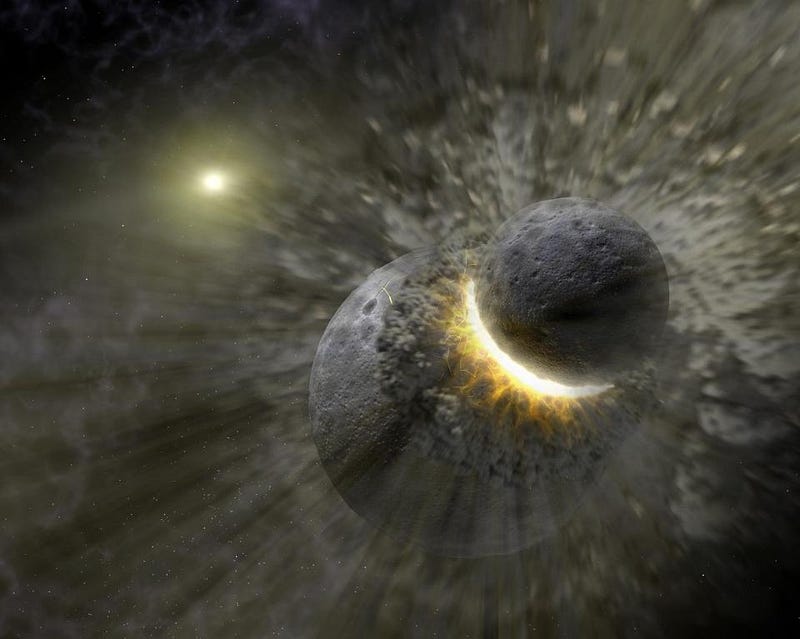
The Earth has only been around for approximately 4.5 billion years: less than a third the history of the Universe. And moreover, we can only infer our past, not observe it directly. But someone who was located a substantial distance away could observe our past directly. Why? Because for them, it’s the present.
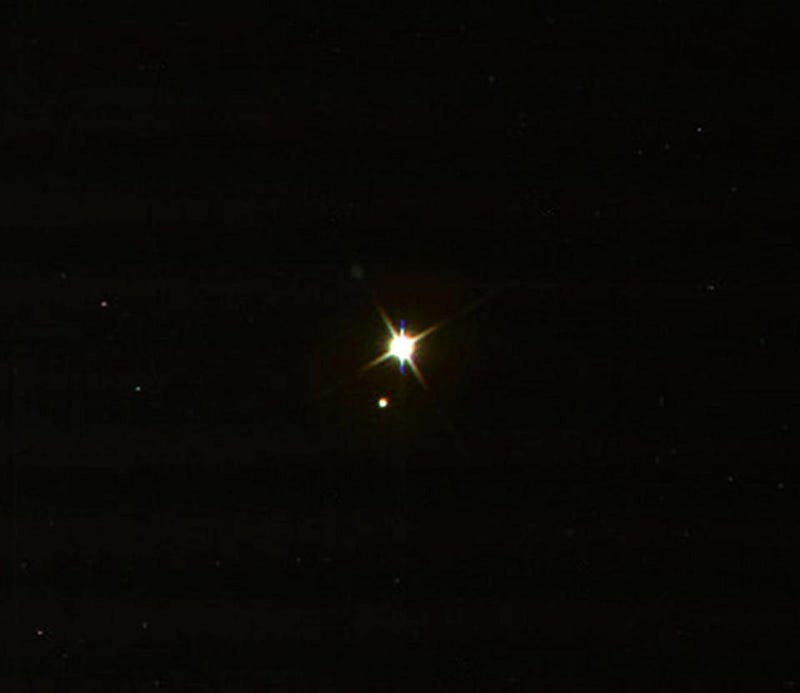
If you were on the Moon looking at Earth, you’d see Earth as it was about 1.3 seconds ago, because the speed of light takes approximately 1.3 seconds to take an Earth-based signal that far through space. If you were on Pluto, you’d see Earth as it was a little less than five hours ago. But it’s when you start going to larger distances that you really begin to appreciate how different Earth was in the past:
- From Proxima Centauri, the nearest star to the Sun, you’d see Earth as it was 4.2 years ago.
- From Sirius, the brightest star in the sky, you’d see Earth as it was 8.6 years ago.
- From Rigel, the brightest blue star in Orion, you’d see Earth as it was 773 years ago.
- From Deneb, the most distant bright star visible, you’d see Earth as it was 2,600 years ago.
- From Andromeda, the nearest galaxy outside the Milky Way, you’d see Earth 2.2 million years ago.
- From Messier 84, one of the most distant galaxies in the Virgo Cluster, you’d see Earth 60 million years ago, just after the extinction of the dinosaurs.
- From IC 1101, the largest galaxy known in the Universe, you’d see Earth 1.05 billion years ago.
- And from GN-z11, the most distant galaxy ever confirmed, you’d see “Earth” 13.4 billion years ago.
Of course, there was no Earth 13.4 billion years ago; there likely wasn’t even a Milky Way! All you’d be able to see is what was there at that time, which is the matter that would eventually turn into the Milky Way, stars and planets, one of which — after another 9 billion years — would form as Earth.
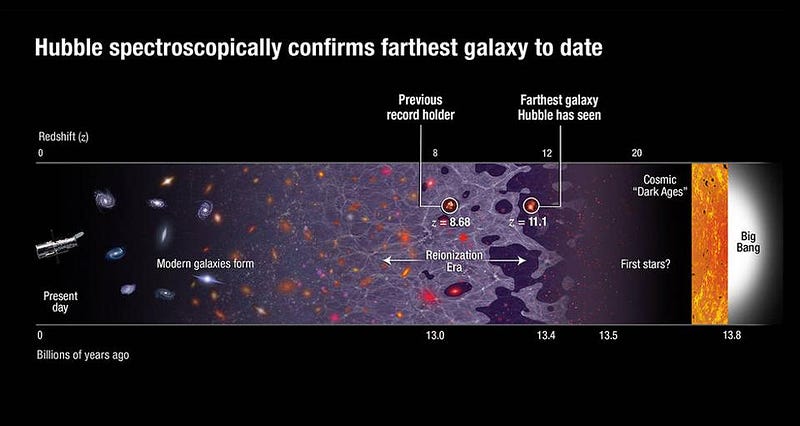
The laws of physics work the same for us as they do for someone at any other location. So when we look at those distant stars or galaxies, we see their light as it was when it was emitted all those years, or millions or billions of years, ago. Yes, that light has changed over time: the Universe has been expanding, so the light has had its wavelength stretched. The brightest ultraviolet light from the most distant galaxies is stretched so severely that it passed from ultraviolet into and through the visible part of the spectrum, and it’s all the way into the infrared portion of the spectrum. And there are probably galaxies out there beyond what even our infrared telescopes can see, because their light has been shifted to longer wavelengths than even Hubble’s infrared camera can observe.
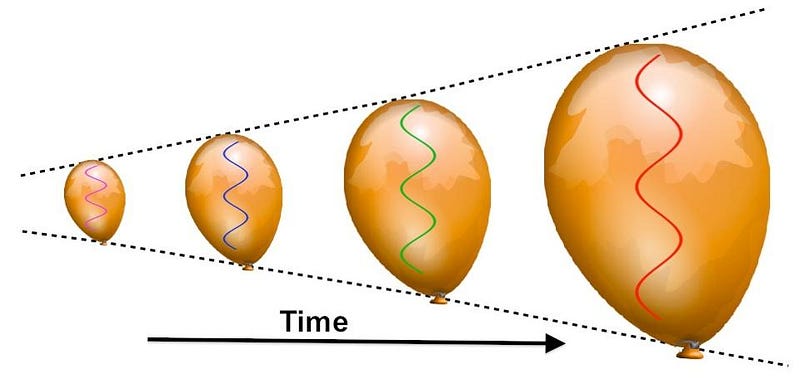
If we want to be incredibly ambitious, we can look for the signatures of the Big Bang itself, far beyond any galaxy. In the earliest stages of time, the Universe would have been filled with a sea of matter, antimatter and radiation particles. Over time, the matter and antimatter would have annihilated away, leaving only a tiny amount of excess matter left over, while the radiation had its wavelength stretched due to the Universe’s expansion. Since wavelength and energy are related — longer wavelength means lower energy — the Universe cools as it expands, meaning that at some point, we reach an important transition: electrons and protons can form neutral atoms without being blasted apart by the radiation. When that occurs, the radiation is free to travel, unimpeded, in a straight line.
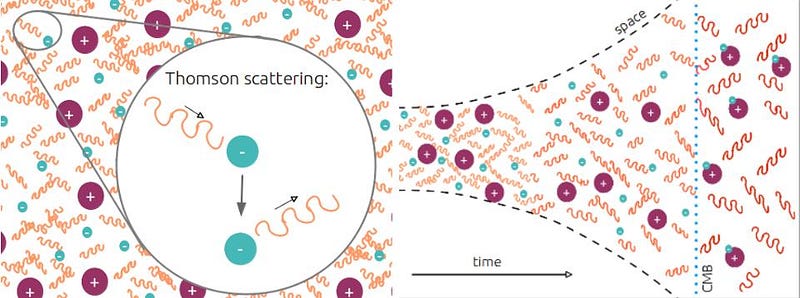
And we can see that today, but only by looking to such a distance that it took light 13.81 billion years to traverse it. When we look out at the Universe and see the Cosmic Microwave Background (CMB), we’re seeing the light that:
- originated from the Big Bang,
- last interacted by scattering off of a free electron at the last moment when the Universe was filled with free electrons,
- traveled for 13.81 billion years through the expanding Universe,
- and arrived at our detector, having shifted into the microwave portion of the spectrum, after that tremendous journey.
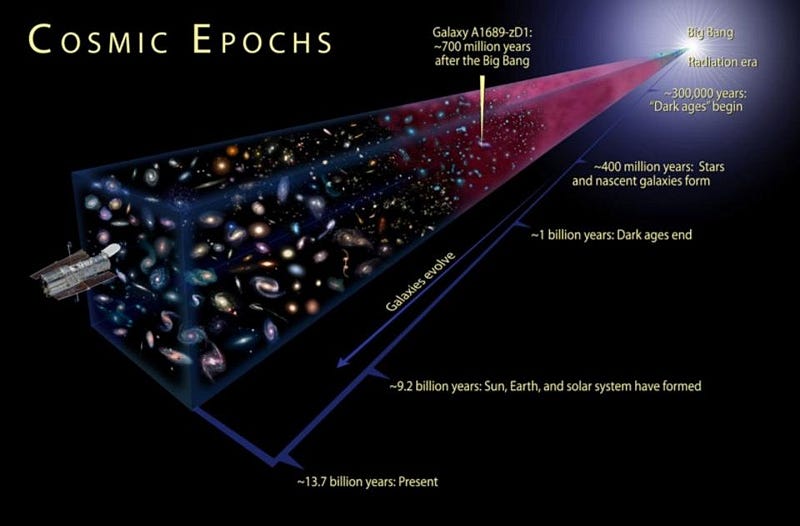
It’s true that that light will speed past our eyes, but there’s always going to be more light from a more distant point in the Universe that will be reaching our eyes for the first time at any point in the future. It will be cooler light, from an earlier time, with a lower photon density as time goes on. In another 100 billion years, it will be a cosmic radio background instead of a microwave background, due to the continued expansion of the Universe. But the farther away we look, the more of the Universe there is to reveal itself to us.
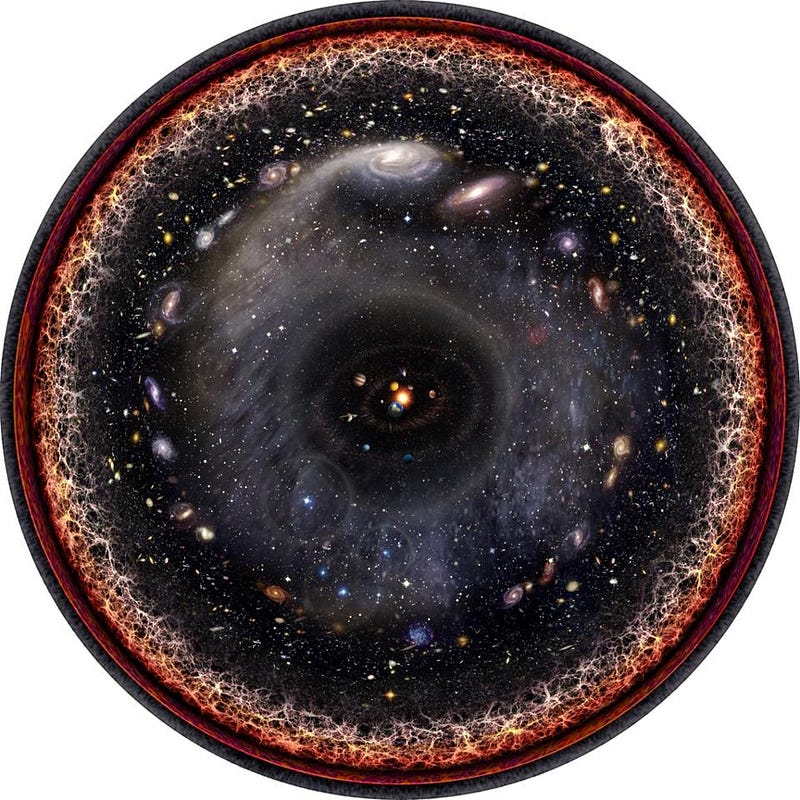
And to someone equally far away, they wouldn’t see Earth or the Milky Way when they looked at us, but rather the light from the Big Bang, just as we see when we look at them.
Submit your Ask Ethan questions to startswithabang at gmail dot com!
This post first appeared at Forbes, and is brought to you ad-free by our Patreon supporters. Comment on our forum, & buy our first book: Beyond The Galaxy!





